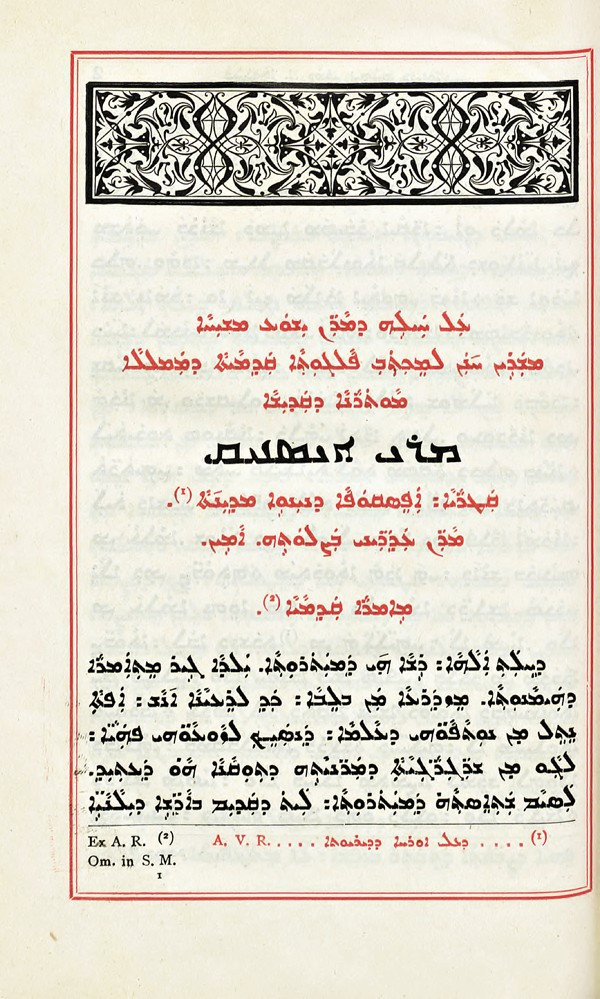 | ||
 | ||
These and all other images of Bedjan’s Syriac text on this website are from a scan made by Brigham Young University & The Catholic University of America and used by permission. The PDF from which they are taken is available on the downloads page.
Holy Transfiguration Monastery Publications, Inside our Books and the Sources behind them, is a companion site to www.thehtm.org.
Copyright © 2012, Holy Transfiguration Monastery, Brookline, MA. All rights reserved. Home Page | About • Contact | Terms of Use
Sources of the Ascetical Homilies: 7. Bedjan’s Syriac Text

Fr. Paul Bedjan’s Syriac Printed text of the Ascetical Homilies
On pp. 77–9 of the Introduction to the Ascetical Homilies we give a biographical sketch of Bedjan and a concise account, taken from his own introduction, of which MSS he used for the Syriac printed text.
Bedjan’s text is the most complete collection of the Ascetical Homilies available, and many things speak in favor of the integrity and trustworthiness of its text.
First, Fr. Paul Bedjan, a Chaldean Catholic born in Persia, was a native speaker of Syriac, and read and edited St. Isaac’s homilies in his own tongue. He included the diacritics for the short vowels that are usually omitted by scribes (as they are in Vatican Syriac 124); though this gives his interpretation of the reading, it is well-nigh authoritative and makes the task of translation easier; and of course his printed text is enormously easier to read than the MSS, Syriac or Greek.
Second, as a Roman Catholic priest educated in Paris, he had many scholarly resources at his disposal, including a printing press. He also came to the Ascetical Homilies with much experience as an editor of Syriac MSS. His many editorial accomplishments include the seven volumes of the Syriac Acta Martyrum et Sanctorum, printed in Paris between 1890–97, and the five volumes of the Homilies of Mar Jacob of Serugh, printed in Paris between 1905–10.
Third, he based his text on an excellent MS of a complete collection of the Homilies found at Mardin, now in Turkey; he also consulted six other MSS and various partial versions to secure the greatest integrity.
The book was published in Paris; the parent publishing house of Otto Harrassowitz was located in Leipzig, the same city where Theotokis had his Greek text printed in 1770.
Shown at left is Homily One of Bedjan's text.
The title – apparently that of the scribe that copied out the MS that Bedjan used for his principal text – is:
By the strength of our Lord Jesus Christ
we begin to write out the first part of the profitable discourse of the holy
Mar Isaac
of Qatar, Bishop of the city of Nineveh.
O Lord, help me by his prayers. Amen.
The various dots above and below the Syriac characters represent short vowels that are often omitted by scribes. Vatican Syr. 124 shown on the previous page has none, except for the pairs of dots that indicate a plural form.
Bedjan’s text, following Western typographic conventions, has some paragraph breaks, though far fewer than average for a printed book in a European language. The MSS have no paragraph breaks, and generally do not even put any space between titles and their following text.

